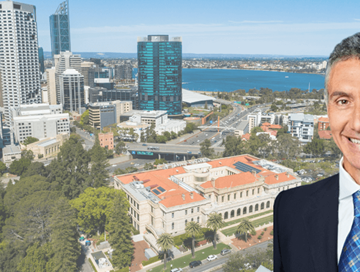As seen in The West Real Estate
Earlier this month we published our million-dollar club list, with 30 new suburbs recording million-dollar median house sale prices in 2023-24. The record number of new entrants reflects Perth’s extremely strong price growth.
This sparked the usual discussion about what’s behind that price growth, with baby boomers, investors and real estate agents among those accused of driving prices up.
What is actually pushing prices up is the significant imbalance between supply and demand, not a particular sector of the property market.
WA’s population grew 3.3 per cent in the year to December 2023 and there were 79,000 net arrivals to the state through interstate and overseas migration. If you assume there are 2.5 people per household, that equates to about 31,600 new households needing accommodation.
The finger of blame has also been pointed at migration, but stopping immigration isn’t the answer. We need skilled workers, and not only to help build houses. We also need nurses and doctors and teachers, particularly in regional areas. The labour market remains tight and small businesses are also crying out for workers.
The issue is not demand, but supply. We are not building enough new homes to meet demand.
In the year to December there were about 16,800 private dwelling completions, which is a shortfall of about 15,000 homes when compared to population growth. This is well below the 15-year average of 22,000 and the 25,000 required under the National Housing Accord.
The supply issue has been a long time in the making and, if anything, is the ‘fault’ of several governments. I acknowledge the Cook Government is pulling every lever they can, and there is no quick fix to this issue, but there are several things I would like to see.
They include less bureaucracy. I would like to be able to walk into my local government and say “I’d like to build a granny flat on my block” and have someone say “this is how we can achieve that”, not “here are 50 obstacles to doing it”. I believe there is too much bureaucratic effort in telling people where they can’t live rather than where they can live.
I’d like to see ‘quick fixes’ from past decades, such as demountable housing, used to fill the gaps, particularly in regional markets. I saw this succeed in Manjimup when I was growing up.
We need to look at affordable and diverse housing options, particularly medium density housing, to support both first home buyers and downsizers. This needs a change of attitude among home owners – more YIMBY and less NIMBY.
Finally, government investment in social housing has been lacking for decades. The current government has increased investment, but we need an ongoing commitment to ensure we support the more vulnerable in our society.
Joe White
REIWA President
.tmb-imgwidgetm.jpg?sfvrsn=87559d54_1)

.tmb-rcarousel.png?sfvrsn=3619a769_1)



.tmb-rcarousel.jpg?sfvrsn=24ed8b20_1)



